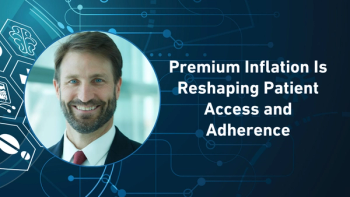
- Pharmaceutical Commerce - September/October 2012
Making the EHR/e-prescribing/drug-label connection
Achieving a 'clinical workflow' compatible with doctors' and hospital administrators' online preferences is the goal; will pharma promotional messaging find a place?
Making it easier to connect patients with co-pay coupons and other forms of patient assistance is probably the last thing that insurers and PBMs—who dislike their effect on drug formularies and step therapies—want to hear, but for the pharma industry, there will be value in the partnerships forming up among vendors of electronic health record (EHR) systems (of which there are hundreds), e-prescribing platforms, and companies that provide updated drug-label information and related data. That last group also is, potentially, the least obstacle-ridden path to putting pharma promotional messaging (as well as co-pay coupons) in front of prescribing doctors.
Two recent announcements point to the future pathway. PDR Network (Montvale, NJ), publishers of the iconic Physician’s Desk Reference and drug alerts (generally, what constitutes “Dear Doctor” letters), has formed a partnership with NewCrop International (Houston, TX), a provider of e-prescribing platforms. NewCrop, in turn, is embedded in some 160 EHR systems, according to the company.
PDR Network allows for a pair of manufacturer-sourced messages to appear (usually as banners or buttons) on its screens; a physician could, for example, link to a manufacturer’s video demonstrating proper auto-injection procedures for a patient—right in the exam room, where the physician has just written the scrip for that drug, according to Andrew Gilman, SVP of vendor relations at PDR Network.
Meanwhile, Physicians Interactive (PI; Marlborough, MA), has linked with Allscripts (Chicago, IL), one of the leading e-prescribing platforms, to offer what it calls the “Zero-Click eCoupon” service. With PI’s branded eCoupon program, users of Allscripts’ standalone e-prescribing technology will automatically see coupons available for the drug being prescribed. (Allscripts also has a significant business in EHR systems; the implication here is that the standalone e-prescribing system could reach into non-Allscripts EHRs.) PI claims access to 875,000 prescribers through its online and mobile offerings—which is just about 100% saturation of the active prescribing audience.
Getting in the workflow
Ideally, these linkups, and others that are happening throughout the EHR universe, allow physicians to look up relevant drug information to decide on a prescription, write the digital scrip, and record that action in an EHR system running in the office or at the hospital where the physician works—all in a handful of linked, interacting screens. This could happen on an office computer, an interactive tablet (iPad) or even a smartphone, enabling the physician to make prescribing decisions at the moment a diagnosis is called for. Today, each step could be done, more or less, with three disparate systems and the physician jumping from one to the other—but that is a balkier intrusion into the workflow of prescribers than having a linked, integrated approach.
There are numerous “mechanical” advantages to such linking as well. Coupon distribution used to be primarily through reps handing batches of paper coupons to physicians they visited; with eCoupon setups, pharma marketers can gain access to physicians with “no see” restrictions on rep visits. PI notes that the online coupon distribution allows it to report data back to the pharma marketer on “insights on their target audience and [to] stay up-to-date on their current eCoupon campaigns,” according to the company.
PDR Network emphasizes the difficulty of keeping physicians current on drug alerts; the company has some ties to professional insurance providers, who want to do all they can to keep their clients informed, thereby minimizing liability issues. But PDR Network has surveyed physicians and found that they have little or no objection to promotional messaging appearing on their screens—as long as it doesn’t get in the way of the prescribing workflow.
There are alternatives to the prescriber-EHR channel; companies like McKesson Patient Relationship Solutions (Phoenix, AZ), and Catalina Health, (St. Petersburg, FL), among others, have systems to deliver coupons at the pharmacists’ counter. All of these service providers, too, emphasize the value of coupons and patient communications as part of an effort to improve overall adherence—a goal that unites both healthcare providers and manufacturers.
Articles in this issue
over 13 years ago
Solving the payer's problem: a new key to market accessover 13 years ago
Grappling with the long-term care marketover 13 years ago
How cloud services accelerate market analyticsover 13 years ago
Container selection and testing for safe drug product deliveryover 13 years ago
A conversation with Mike Alkire, Premier, Inc.over 13 years ago
Coordinating payer contracts and direct-to-patient discountingover 13 years ago
Complex supply chains demand a holistic approach to protect patientsNewsletter
Stay ahead in the life sciences industry with Pharmaceutical Commerce, the latest news, trends, and strategies in drug distribution, commercialization, and market access.




